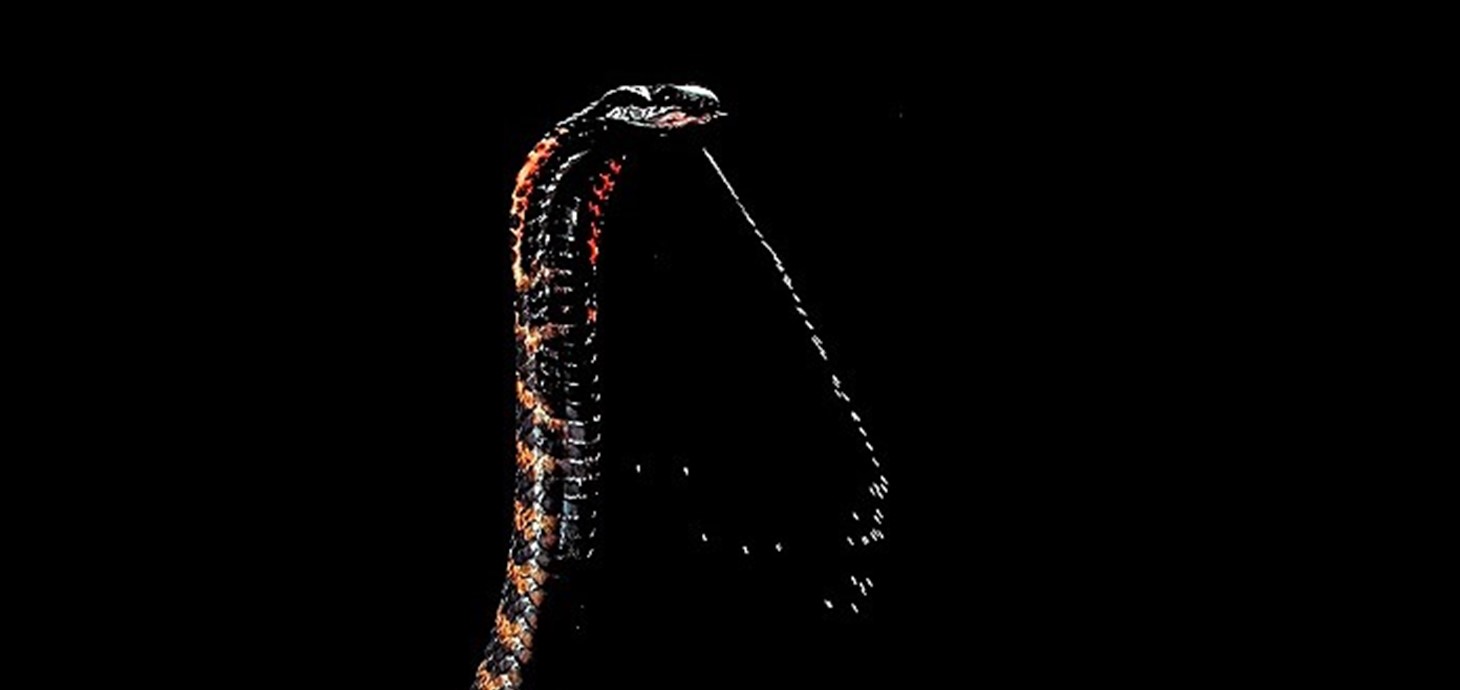
A cobra spits its venom. Photo: Trustees of the Natural History Museum, London, and Callum Mair
The ability of some cobras to spit their venom, unique amongst snakes, evolved as a defence mechanism to inflict pain rather than to catch prey, new research involving a Swansea University expert has revealed.
The team also suggest that this spitting behaviour may have evolved as a defence against attacks by the ancestors of modern humans.
The research, which was led by the Centre for Snakebite Research at the Liverpool School of Tropical Medicine (LSTM), involved Dr Kevin Arbuckle of Swansea University College of Science, who played a key role in the evolutionary components of the research.
The team looked at three different groups of spitting cobras. They found that each group independently increased the production of PLA2 toxins. Interestingly, these toxins don't cause pain themselves, but when combined with so-called 'three finger toxins' in cobra venom they greatly increase the pain caused.
The evolution of more potently painful venom enables spitting cobras to more effectively defend themselves from predators or aggressors by spitting venom into sensitive eyes, resulting in pain, inflammation and even blindness.
The fact that each independent lineage has evolved the same ‘solution’ for defence is an example of what is called convergent evolution, which means evolution has been repeatedly funnelled down the same pathway.
Dr Kevin Arbuckle of Swansea University College of Science said:
"Although venomous snakebites to humans are inflicted in self-defence, snake venoms have generally not evolved for the purpose of defence.
However, the evolution of venom 'spitting' in two groups of cobras plus a close relative is an exception: these three groups of snakes have evolved this behaviour which is used purely for defence.
We were able to show precisely how the venom of these snakes has also evolved to cause pain when sprayed into the eyes of a predator. Our research also suggests the tantalising possibility that extinct humans were instrumental in driving the evolution of spitting cobras."
Dr Taline Kazandjian of LSTM, joint-lead author on the paper, said:
“The evolution of adaptations is of fundamental importance in biology for understanding the processes by which organisms survive in their ecological niches. Venom systems are fantastic natural models for understanding the molecular basis of adaptations. Defence is not considered to be a strong selection pressure on the evolution of venom activity in snakes, however in this case we clearly demonstrate that defence can be a powerful influence on snake venom evolution.”
But what selective pressures stimulated the evolution of defensive venom spitting in the first place?
LSTM’s Professor Nick Casewell, who led the study, explains:
“Bipedal larger-brained hominins are likely to have posed a strong threat to snakes, and we show in this study that the evolutionary timing of the origin of venom spitting in Africa first, and then later in Asia, roughly corresponds with the divergence of our ancestors from chimps and bonobos in Africa, and their later migration to Asia. While further data is required to robustly test this hypothesis, its intriguing to think that human ancestors may have influenced the origin of this defensive chemical weapon in snakes”.
The research was published in the journal Science.
